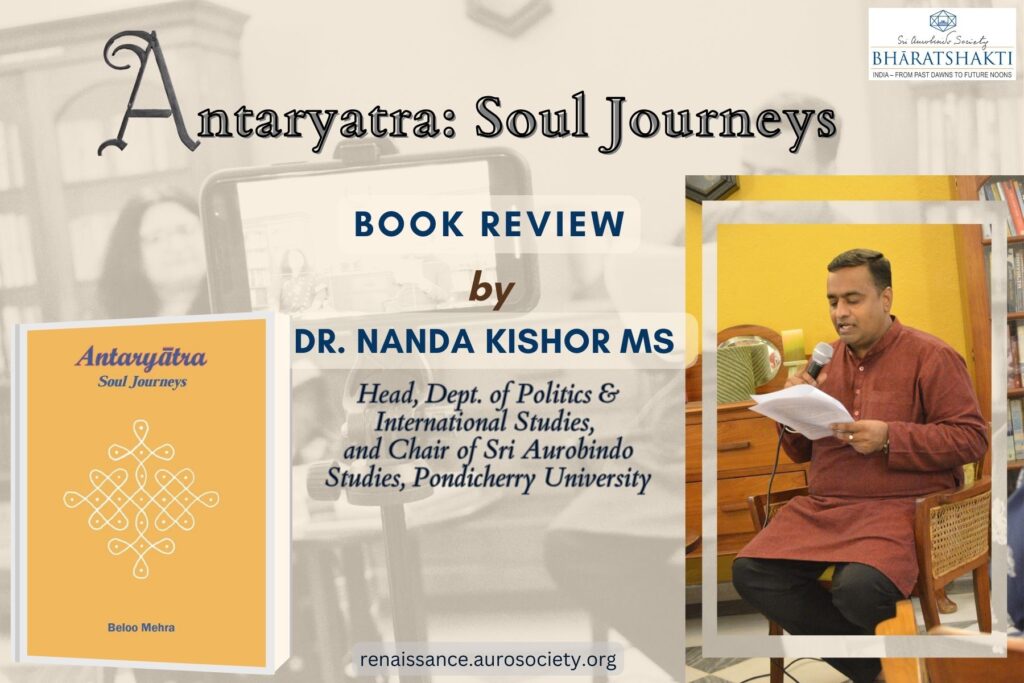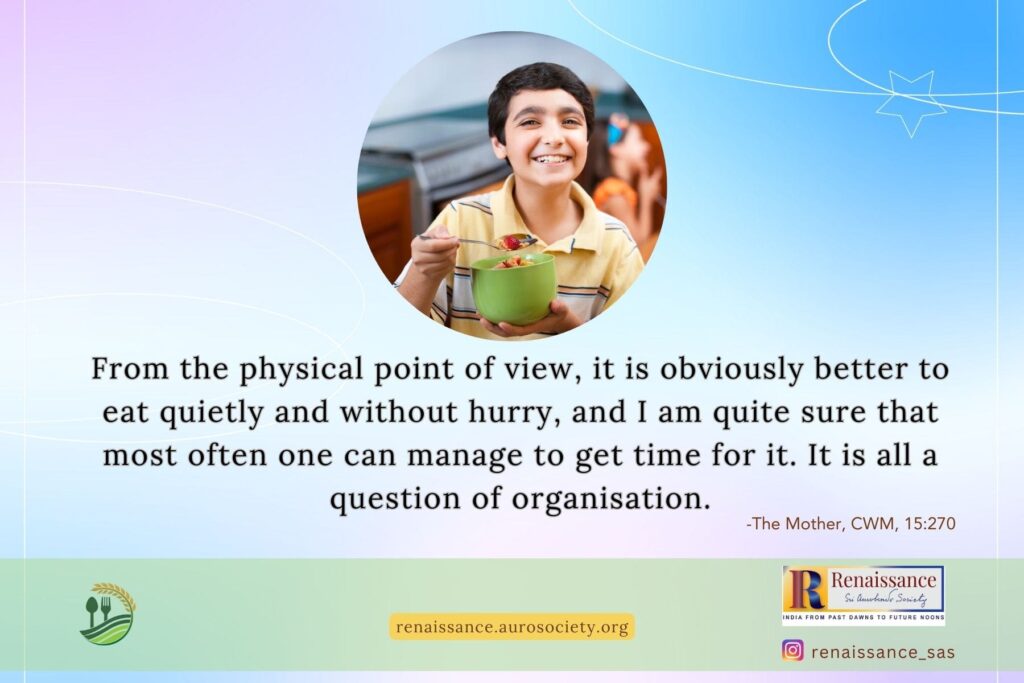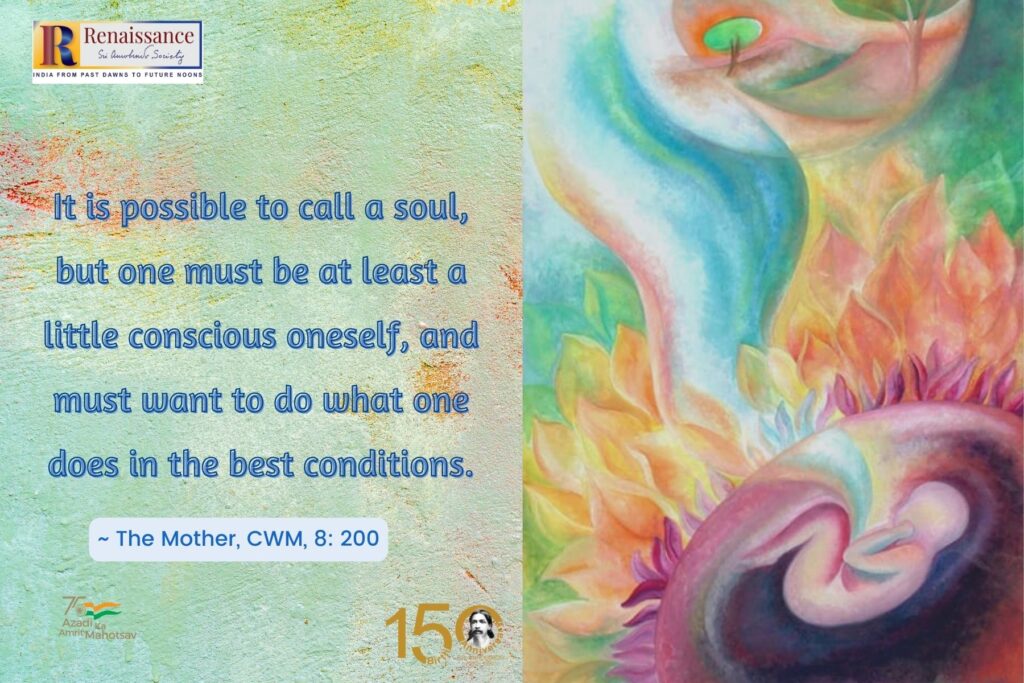Volume 1, Issue 5
Author: Pragya Upadhya
CONTINUED FROM PART I
DAY 2
Role of prayer, meditation and other spiritual practices in pregnancy
While speaking of embryonic development, Dr. Tushar Dashora shared a case history to explain how thoughts of unwantedness in the womb become permanent reality for the child and continues to impact an individual throughout all the stages of his life. He spoke of Epigenetics, the study of heritable changes in organisms caused by modification of gene expression rather than alteration of the genetic code itself.
It was said that the environment and lifestyle can have a direct interaction with the genome and thus influence epigenetic change.
Human epidemiological studies have provided evidence that prenatal and early postnatal environmental factors influence the adult risk of developing various chronic diseases and behavioural disorders. Both mother and father have a hand in their child’s health and epigenetic marks as well. It is becoming more apparent that epigenetic effects occur not just in the womb, but over the full course of a human life span, and that epigenetic changes could be reversed.
There are numerous studies that show how different lifestyle choices and environmental exposures can alter marks on top of DNA and play a role in determining healthy outcomes. Environmental influence and life experience switch genes off and on. Hence, it can be confidently said that the effects of garbha samskāra transfer all the way to the level of the genes.
Dr. Dashora also explained that just as the mother’s thoughts become the inner voice for the child, the father’s voice too has an outstanding effect on the child, and in fact the speech and language development take place under the influence of the father. Hence, it is better to learn new languages, or develop vocabulary and speech with the help of the father or any father figure.
Prayer was beautifully described by him as an act of Quantum communication arising from a pure heart. Types of prayers were explained as tāmasic (coming from fear), rājasic (coming from desire) and sāttvic (coming from truth).
A list of prayers and the qualities they invoke was also shared:
- Santaan Gopal mantra and Shivamahim strotam (for conception)
- Garbh rakshambika strotam (foetus protection)
- Shiv-raksha strotam (allays fear, bad dreams, ensures good health)
- Devi Kavach (protection against physical harm, enhances valour) Mahamrityunjaya mantra (ensures good health, protects against disease and death)
- Gayarti Mantra (well-being, intelligence and brilliance)
- Chanting of Ram-naam, OM, So-ham, Ham-so, OM Namah Shivaya, OM Namo Bhagawataye Vasudevaye, Hare Rama Hare Krishna.
Importance of “Sanskrit Effect” on the cognitive abilities like memory enhancement was also shared, thereby highlighting the importance of reciting and hearing Sanskrit strotas and mantras during pregnancy. An interesting fact discussed in this regard was that as an adult we are able to register only 40 stimulus per min, against 40,000 stimulus per min registered by an embryo.

Dr. Dashora closed his presentation by quoting Archimedes, “Give me a lever long enough and a fulcrum on which to place it and I shall move the world.” If the non-communicable diseases and psychological conditions represent the load to be lifted, and prenatal and perinatal period are the fulcrum, the practice of ancient Indian techniques of Yoga, prayer, meditation and garbha samskāra can be the necessary lever needed to lift the load.
Indian wisdom and traditions on prenatal education, pregnancy and parenting
Dr. N. Kalyani made another impactful presentation, which opened with the series of pictures from ancient Kamakshi temple sculptures depicting King Dashratha along with his 3 wives performing rituals for pregnancy, the queens giving birth to their 4 sons, thus highlighting the primordial existence of Prenatal education in our culture.
This was followed by quoting Bhishma from the Mahabharata – “Mother is the panacea of all kind of calamities.” This, Dr. Kalyani says, suggests that the mother’s health during pregnancy is not just a personal responsibility but also a social responsibility because every child will impact the larger society as well.
She also shared that as per Veda Vyasa, whatever a woman and her spouse think about at the time of conception influences the type of soul being brought into the womb. She shared the examples of Dhritarashtra, Pandu and Vidura to highlight the impact of the mother’s emotions and thoughts during conception on the physical and psychological state of the progeny.
Dr. Kalyani greatly emphasized that prenatal education should start from the time of puberty and special importance needs to be given to the physical and mental hygiene during the menstruation days.
An important step in planning for the pregnancy was shared by Dr. Kalyani as garbha sankalpa for which the following steps needs to be taken.
- Prayatna – pregnancy needs to be planned and deeply aspired for and should not be an accidental or unwanted one.
- Panchkarma – following an Ayurvedic process for deep cleansing of the body and preparing it for pregnancy
- Agnihorta – it helps cleanse the environment by the use of sacred herbs.
- Go Puja – it is recommended because dhannanjaya prana, which helps in directing the movement of sperm towards the ovum and gives it required power to fertilize it, is present in high proportions in cow-sheds.
- Brahmacharya – practicing self-regulation of all the sensual pleasures
- Mauna – conserving energy at internal and external level by restraining from verbal and mental dialogues
- Brahma muhurat –breathing fresh air in the early morning (about 3-5 am) to receive Ojas, when lung energy is at its peak
- Dāna – developing right attitude and the deeper level of contentment, especially important for the husband as it prepares him for much intense garbhdāna
- Mantra japa – japa of the mantra and deity dearest to the spouse
- Langhanam – fasting to remove the toxins from the body
- Sāttvic-aahaara – considering stomach as a hawan kund and putting only the best food in right quantity, right nutrients and at right intervals of time.
Dr. Kalyani threw light on how month-based therapies such as music therapy, aroma therapy and colour therapy, etc. can be used for stimulating the best results for the baby.

The concept of inheritance from an Ayurvedic perspective
Dr. Indushree C. Suseelan gave a brief introduction of some concepts from Sristi Nirmana Parampara, Karya Karana Siddhanta and Anuvamshika Siddhanta. She described how imbalance in āhara-vihāra (food and lifestyle) of the pregnant women, such as consumption of alcohol, tobacco, mercury, marijuana, pesticides can lead to aggravated dosha and garbha vikriti (congenital abnormality) at physical and psychological levels.
Other factors responsible for congenital deformities may include: kāla dosha (i.e. not following the code of ritumati charya and garbhadana charya); beeja dosha (deformity in sperm or ovum), atma dosha-purva karmaphala (indriya vikriti) etc. Defects in these factors can result into congenital deformity, infertility, sterility, sexual perversion, etc.
Hence in order to have healthy offspring, one needs to follow six-fold path of ritu charya, dinacharya, ritumati paricharya, garbhini paricharya, pumsavana karma and genetic counselling.
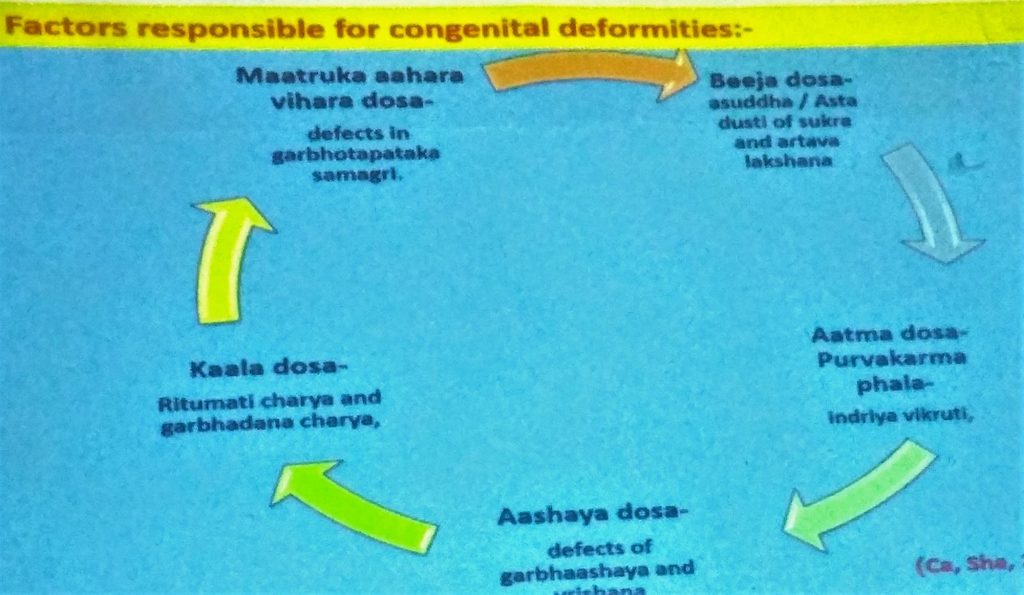
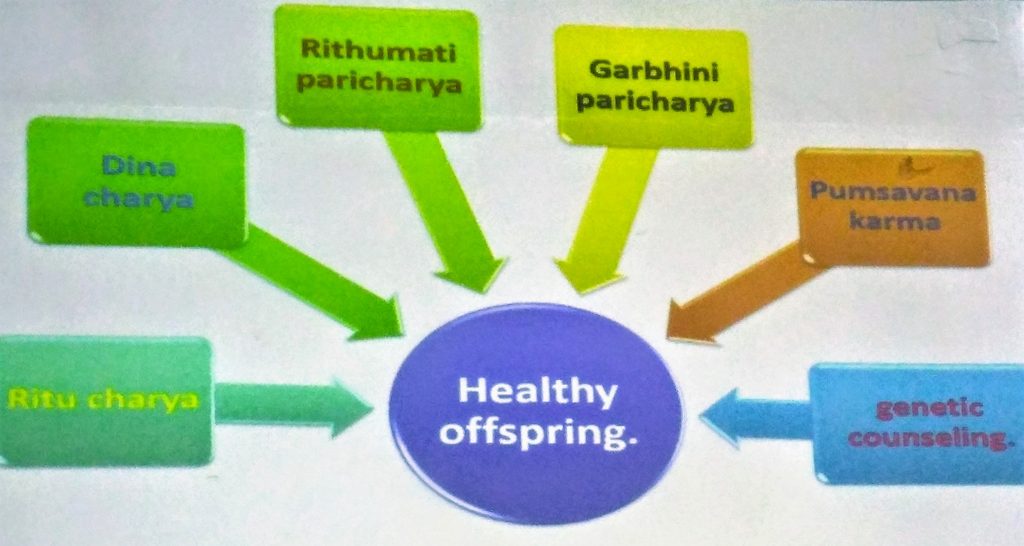
Dietetics, regimen and psychological care in pregnancy from Ayurvedic perspective
Dr. Megha Udai explained that just like for a seed to grow into a plant requires favourable season (ritu), favourable soil (kshetra), water and nutrients (ambu) through the soil, and a healthy seed (beeja), same requirements apply for the birth of a healthy baby. The favourable time can be the ovulatory period (4th day from menstruation to next 15 days), favourable soil indicates the healthy intrauterine environment; ambu represents proper hydration and nutrient from the mother’s blood supply, and healthy beeja represents healthy sperm and ovum.
She suggested that when during the first trimester, a garbhini (pregnant woman) experiences nausea, vomiting and loss of appetite, thus it is recommended to consume sweet, cool and liquid diet like eating ksheera (milk and rice pudding) which can help in relieving the symptoms and adequately nourishing the foetus. In the 6th and 7th months of pregnancy, ghrita (ghee) should be a stable part of the mother’s diet as it helps in enhancing buddhi and smriti (intellect & memory) of the child.
Prenatal education and care from Ayurvedic point of view
Dr. S. Swaminathan offered a very engaging and amusing presentation reminding all about the use of common household spices and oils along with some of the easily available medicines which when taken by mother during pregnancy can rule out the chances for the child to ever come across most of the non-communicable diseases. He suggested massage of Brahmi oil on head and temple of the pregnant mother to help in strengthening cognitive development of the child.
He also laid emphasis on taking oil bath regularly. He added that sitting in bright sun light while having a massage of warm oil not only lubricates the body at the surface level, but the oil absorbed in the body along with the outside and internal heat also helps in cleaning the intestines and inner passages within the body.
He also shared some Ayurvedic formulas related to common problems faced by women during pregnancy, for example, for sleeplessness he recommended using a combination of khas-khas, milk and sugar. For pregnancy related muscular cramps, mustard powder and raw rice powder in equal quantities, mixed with warm water smeared over a cloth may be spread over the cramp affected area.
Use of Sri Yantra in prenatal and perinatal empowerment
Sh. Shiva Belavadi (Babaji) presented a paper on ancient Indian sacred geometry, Sri Yantra. Speaking of matter-spirit paradigm, he explained that formless energy (nirguna), in its pure existence (sat) gets contaminated giving rise to a state of creation (rajas) and sustenance (tamas), thus creating energy represented in a fixed form (saguna).
He gave a lucid understanding of the concept of bindu which can be considered as the representation of smallest of all and simultaneously the biggest of all. As the energy enables movement in a given direction, it enables the formation of specific shapes. This can go on from simple to complex, leading to energy transformation to manifest new possibilities.
He further explained how mandalas can be better understood as the pictorial arrangement of the human mind and yantras can be better understood as a representation of the impressions in the human subconscious. In a human being, energy is arranged in layers in the form of Panchakoshas: Annamayakosha (representing physical layer/body), Pranamayakosha (representing emotional layer/life force), Manomayakosha (representing mental layer/mind), Vigyanmayakosha (representing causative layer/subconscious), Anandamayakosha (representing universal layer/pure consciousness).
The relevance of subconscious was explained in detail as it is formed out of numerous impressions which are nothing but the energy templates that form the basis for all manifestations in and as human life, including information to build the experiential layers and the possibilities of new human life.
The subconscious along with its entire patterns and impressions act like an operating system, while mind is the software and brain is the hardware. It was explained that Sri Yantra is the blue print of the visible and invisible human construct and its connect with the universe, sort of like a human energy template.
Sh. Belavadi effectively explained how conception is an energy process between 3 entities, i.e. Father, Mother and jiva-atma of the future child. At the time of the conception, the superimposition of the energies happens, a new energy template is created, and a jivatma which is a match to it is invoked to take birth in the physical world.
According to the speaker, the spiritual conception happens first beyond time-space, when the fusion of the parental patterns and the incoming jiva-atma pattern happens. This precedes physical conception. Physical conception is then mirrored in the world of material reality with the fusion of sperm and egg and the formation of zygote. Inability to conceive happens when the template of cosmic complex does not match with the parents.
Sh. Belavadi concluded by reminding how reproduction in animals and plants take place through programmed instincts, happening unconsciously to keep the species going. Conscious conception is the only thing that sets human beings apart from the other species.
Hence parenthood needs to be recognised as a divine opportunity, and not merely an act of breeding and rearing. Thus, conception and parenthood need to be considered as a spiritual practice involving self-evaluation, application of intention, pleasure of procreation, and the penance of parenting all coming together.
The inner state of the parents in which a child is conceived not only defines the quality of the child’s entire lifespan, but also the quality of the larger world. He concluded by saying that it is important to reflect upon the kind of a world we are leaving behind for our children, but it is even more important to consider, “what kind of children are we leaving behind for this world.”
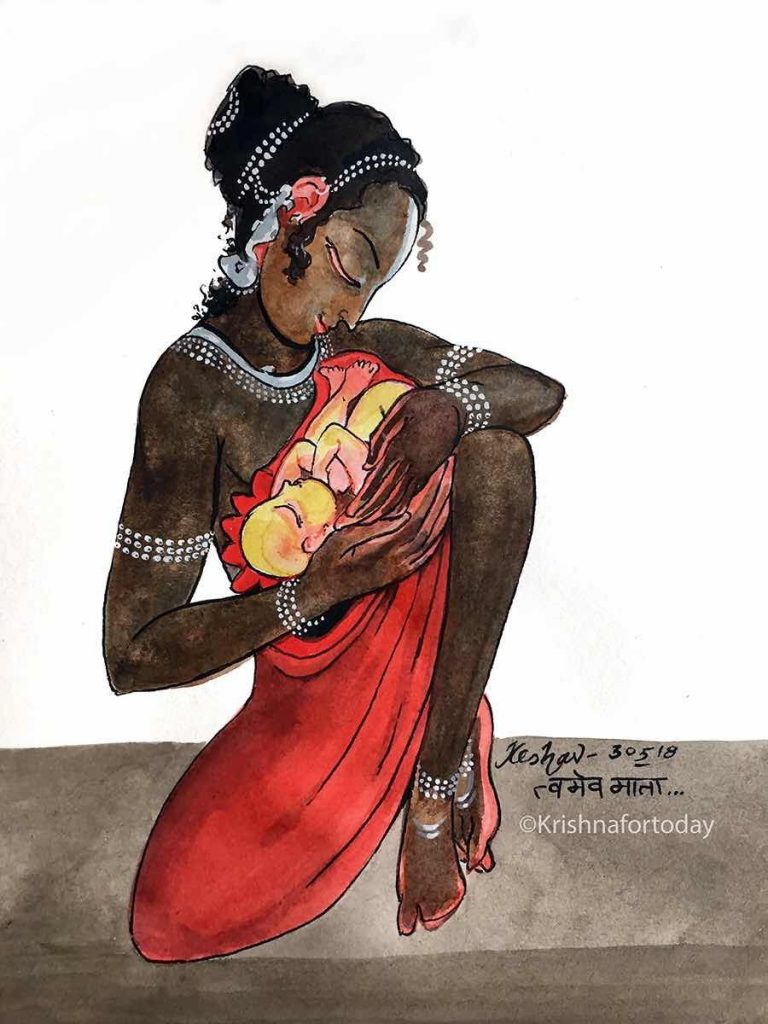
Autobiographical sharing
Ms. Rutu Baldha shared a few anecdotes from her own life. She spoke about how her mother’s conscious practices during her two pregnancies – reading spiritual texts such as Devi Bhagavat and practicing basic mathematics when she was pregnant with her daughter, and reading Ramayana and creating artwork when she was pregnant with her son (Rutu’s brother) – has impacted the different temperaments, aptitudes & personality traits of the two siblings.
She confessed of being fierce in her temperament like Durga, having a flair to take charge against any injustice, being extremely good in mathematics despite nobody in rest of the family having any mathematical aptitude. She said that she could chant Devi Bhagavat almost naturally as a child without having a need to learn it or practice the chanting.
Similarly, her brother has a very calm, composed and poised temperament, almost like that of Sri Rama. He was considered an art prodigy, and right from his childhood days remembered Ramayana very well. As children they both were very easily pacified by listening to the same chanting whenever agitated, she recollected. She also brought an interesting fact forward about the Jewish custom of pregnant women solving mathematical problems, which might partially explain why many of the world-renowned mathematicians and physicists came from Jewish backgrounds.
Relationship between healthy mind and fertility
Dr. Ankita Patel highlighted the need for planning the pregnancy well and becoming mentally prepared for it, having stable and happy state of mind during coitus, and keeping the mother stress-free. Stress demolishes nutrition pathways and helpful hormones, thus having adverse effect on the health of the foetus.
As per Ayurveda, the effect of mental instability during coitus makes the following types of people unsuitable for it: grief sicken, influenced by anger, mind which is not completely involved in the act, who wishes for another man/woman. It was suggested that such mating might not lead to conception or will lead to children with undesired qualities or deformities.
On the other hand, at least one month of preparatory modalities for the body and the mind were suggested before conception. While describing the physiology of ejaculation according to Sushruta, she mentioned that the influence of pleasant mind at the time of coitus essentially enables ejaculation of sperms.
Hence on the day of coitus, everything needs to be arranged so that they are pleasing to one’s mind. At that time, both the parents should have a strong desire of conceiving a healthy child of high consciousness, and should be in a state of pleasant state of mind.
CONCLUDING THOUGHTS AND REFLECTIONS
The National Seminar on Prenatal Education brought together widely diverse Ancient Indian Perspectives, right from the Veda, Upanishads, Shiva Gita, Sri Vidya, Yoga Sutra, Ayurveda, to examples and insights from the Mahabharata, Ramayana, and modern Indian Rishis such as Sri Aurobindo and the Mother. It was represented by professionals from various fields coming from different states of India.
Moreover, the language of exchange was not only English and Hindi but also Sanskrit, and couple of papers were presented eloquently in Sanskrit, thus making it a truly enriching experience.
The best part was that the traditional wisdom was shared in a very rational and scientific manner by experienced professionals doing extensive long-term research and field work in the given area of their expertise.
Over the past few years, as a psychologist, my work with children, young adults, parents and educators of diverse age groups has rendered me with precious social, cultural and clinical experiences, often revolving around the prevention and management of psychological conditions and facilitating sound holistic development of an individual.
As part of my practice, I observe young children, adolescents and adults showing certain pathological temperaments, signs and symptoms which at the time of taking case history are often discovered to be deeply rooted in the prenatal, perinatal or early childhood years resulting in direct long-term impact on the individual’s life.
Psychological theories such as ‘Diathesis–Stress Model’ attempts to explain how a disorder or its trajectory manifests as the result of an interaction between a pre-dispositional vulnerability (genetic, psychological, biological, or situational factors) and a stress caused by life experiences (environmental influences in the form of stressors), making modern psychology recognise the importance of both Nature and Nurture.
However, modern psychology, bounded by the standards of physical sciences still restricts itself to the very superficial understanding of cause and effect, etiology and treatment of most disorders. The Ancient Indian perspectives on prenatal, perinatal and postnatal psychology show us a promising way forward as a preventive and rejuvenating tool for the management of mental health by having a superlative effect on the lives of the children as well as the mothers, thus having a larger socio-cultural impact by improving the lives of the families.
Therefore, a sound Prenatal Education in its true potential can help our future generations to break free from various limitations and work toward realising their highest potential.
As a young woman, I felt that this seminar answered many of my questions and helped me develop better understanding of our rich ancient knowledge traditions, sciences and philosophy. It opened my eyes to look beyond the relics and rituals, and discover meanings of the intrinsic symbols rooted in them before rendering them obsolete.
It also educated me on less talked about topics such as menstrual health, brahamacharya, sixteen samskaras and their psycho-social-developmental significance for happy pregnancy, spiritual significance of love and human relationships, to list a few.
There was certainly much to take back from the seminar, aside the technical references, profound explanations of ancient wisdom behind various rituals, sharing of personal experiences and open forum discussions.
But the most important takeaway was the hope in the eyes of today’s youth for the possibility of the conscious conception of a new humanity!
Have you read Part 1?
Cover image: Mother and child, by Ritam Upadhyay

